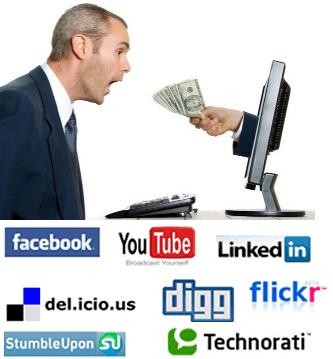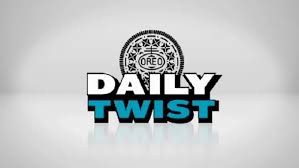Advertising Trends – Keep Your Consumers Engaged
 Every day we are showered with umpteen advertisements; they are in newspapers, on billboards, hoardings, banners, websites, newspaper insertions and TV. Whether we like them are not – we are exposed to about hundreds of them on a daily basis. Majority of the time, we ignore them because we are used to tune them out. Today’s consumers need a lot of flexibility, independence and ease while consuming any content. They don’t like to be dictated in what, when, where and how they should consume any content. Advertisers are facing a big time challenge to understand the consumer’s mindset on when, how and where they spend their time, and adjust the advertising patterns accordingly.
Every day we are showered with umpteen advertisements; they are in newspapers, on billboards, hoardings, banners, websites, newspaper insertions and TV. Whether we like them are not – we are exposed to about hundreds of them on a daily basis. Majority of the time, we ignore them because we are used to tune them out. Today’s consumers need a lot of flexibility, independence and ease while consuming any content. They don’t like to be dictated in what, when, where and how they should consume any content. Advertisers are facing a big time challenge to understand the consumer’s mindset on when, how and where they spend their time, and adjust the advertising patterns accordingly.
Among the topnotch media vehicles TV ads historically were and still are the advertising platform of choice for brands seeking to maximize their reach; in past the next choice was print media and outdoor platforms. But today, internet advertising has already overtaken and left other media vehicles behind. As per the latest trends TV ads are complimented by internet ads and this is getting the advertisers required results. Advertisers today are using internet as a platform to accelerate user engagement. Leading advertisers are stitching together offline and online consumer experience while they are creating persuasive, inventive and interactive internet experiences.
Advertisers cannot ignore some of the glaring facts while designing strategies for ad campaigns.
Mobile has become the center of marketing: From cell phones to smart phones, tablets to wearable gadgets, the progression of mobile cannot be ignored. It has become one of the prime features which influence the advertising and marketing world. As the focus is shifting from the TV screen to smaller screen, and the fact that mobile is considered a personalized gadget for each individual, brands will be able to strike up a more personalized relationship with their customers by using the influence of the power of mobile.
Customers are looking for stronger ties with brands: Already, customers are seeking more commitment from brands. They seek transparency and ethical behavior from the brands. This trend will persist as customers are becoming more demanding in their expectation of transparency. They will buy and be loyal to brands which offer ‘what they promise’ – the ones that create real value. This simply means that brands which will not make their customer dealings transparent will doom automatically.
 Good content will always be welcomed: Good and evocative advertising content has been, is and always be appreciated by viewers. Predominantly visual content will rule the perch in the online marketing world. Quite often we come across an advertisement that’s so clever, you instantly stop and appreciate it. Advertisers need to evolve into various forms at times some may disrupt the conventional marketing models. But, they need to adapt to ever changing market changes because the speed at which a brand can create amazing content will play a part in their success. Last year in the tax season, Bajaj Allianz Life Insurance created the Tax Monster, a character that personified the much-hated taxes to build awareness for its Fortune Gain and Future Gain schemes. During a three-month campaign, the insurance brand sought to debunk common tax issues and talk about how insurance is great to save tax. The brand chose a content-driven strategy where fans were fed with information in a fun, interactive manner, using which they had to defeat the tax monster. The ad was appreciated by masses.
Good content will always be welcomed: Good and evocative advertising content has been, is and always be appreciated by viewers. Predominantly visual content will rule the perch in the online marketing world. Quite often we come across an advertisement that’s so clever, you instantly stop and appreciate it. Advertisers need to evolve into various forms at times some may disrupt the conventional marketing models. But, they need to adapt to ever changing market changes because the speed at which a brand can create amazing content will play a part in their success. Last year in the tax season, Bajaj Allianz Life Insurance created the Tax Monster, a character that personified the much-hated taxes to build awareness for its Fortune Gain and Future Gain schemes. During a three-month campaign, the insurance brand sought to debunk common tax issues and talk about how insurance is great to save tax. The brand chose a content-driven strategy where fans were fed with information in a fun, interactive manner, using which they had to defeat the tax monster. The ad was appreciated by masses.
User generated content helps brand recall: The smart marketers have realized the power of user-generated content. The customer’s feedback and their opinions will surpass branded content as brands begin to surrender control of their own brands’ marketing to their customers. Customers interact with each other online through their reviews, experiences, comments on social media, blogs, and discussions. If the brand is appreciated, impact will be positive. However strong the advertiser’s content is, the co-creation between brands and consumers call the shorts. This has indeed become a popular trend.
Social media has become an integral part of the promotion. Its impact has grown stronger and hence most marketers have adopted a transition effort to social channels.
Brands will survive because their loyalists: Today, in the management of marketing, the future of the brand depends solely in what customers are talking about a brand. The customers’ responses and feelings toward the brand will dictate future campaigns. Fundamentally, if the customers are happy, they will gladly wear the marketer’s hat and do what is needed to bring their favorite brand in focus.
Marketers need to understand that they cannot rely solely on demographic parameters; for example depending solely on the millennial; a product which is targeted solely at “youth” segment is bought and consumed by older generations too.
Personalized data and accurate analytical tools will help marketing efforts: Marketers will have to rely on customer’s personalized data and focus on relationship building. The data collection will need to be rightly captured and measured scientifically. Many ideas are hypothesized, but few are practical. The need of the hour is better analytical tools to help marketers determine the success of their campaigns.
 The Oreo biscuit by Nabisco, an American company created a social and digital campaign for their brand by teaming up with ad agency 360i of 100 days in 2012. The campaign was creative and whimsical visualizations of “America’s favorite cookie” from June 25th until October 2nd. Each day, Oreo shared an image of a cookie portraying thinkable and unthinkable events of the day capturing important milestones or current events.
The Oreo biscuit by Nabisco, an American company created a social and digital campaign for their brand by teaming up with ad agency 360i of 100 days in 2012. The campaign was creative and whimsical visualizations of “America’s favorite cookie” from June 25th until October 2nd. Each day, Oreo shared an image of a cookie portraying thinkable and unthinkable events of the day capturing important milestones or current events.
Using milestones is in general a great way of creating engagement, both through location specific celebrations and worldwide events. In India Amul is famous for it. Such campaigns click because a large number of people can easily relate to it. Oreo’s 100 days campaign engaged fans with the “Daily Twist” campaign as people became curious and wanted to see what comes next? The campaign was driven on Facebook, Twitter, Tumbir and Pinterest.
Some events are of course more predictable than others, such as the Olympics, Labour Day and the beginning of new school year, but most of the celebrated events were surprising, such as Talk like a pirate day, Elvis Week and the Mars Rover landing. Even though some of the cookie designs were obviously planned ahead, you could sense that the Oreo design team monitored trending topics and enhanced current events, such as the premiere of Batman “The Dark Knight Rises” and the release of the iPhone5 ensuring that the content was always relevant and timely.
The campaign finale took place at Times Square with the last “Daily Twist” cookie design created in real-time in a pop-up agency, based on ideas from consumers suggested through social media or from people showing up on Times Square for the finale.
So, today’s advertising trend is that the brand needs ‘two-way conversation’ wherein the consumers participate in the advertising campaigns. Previously it used to be ‘one way’ in which a brand dominates the conversation or outputs information without really engaging the consumers. Two-way conversation is a strategy that a brand uses to radiate a human quality, showing and practicing that they care about what consumers have to say. Instead of broadcasting, they’re engaging.













































